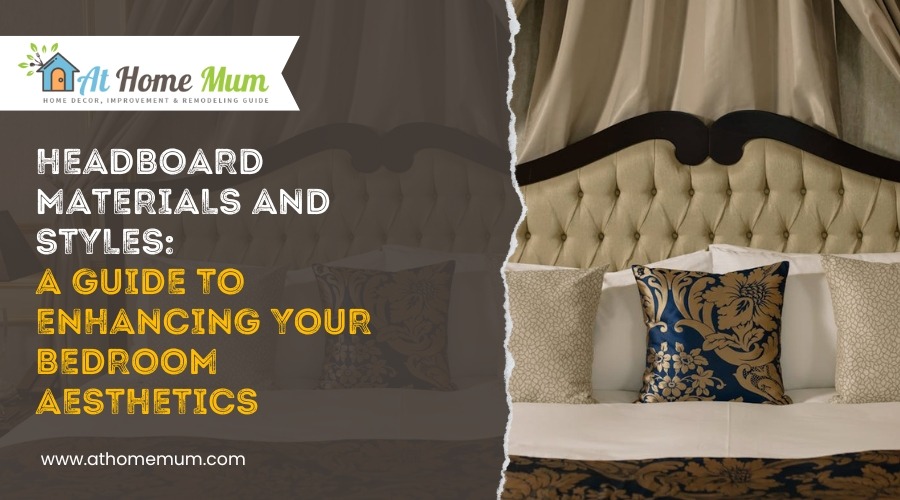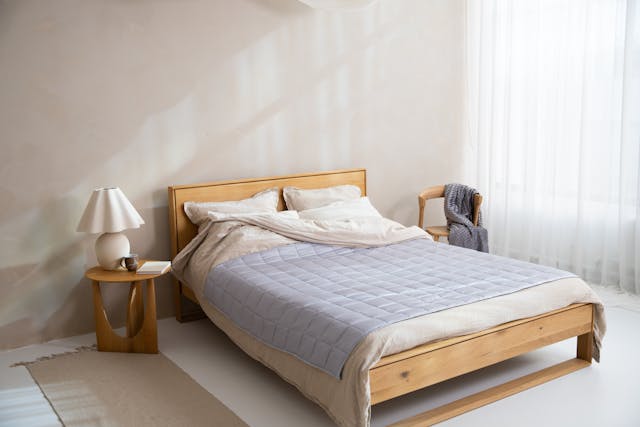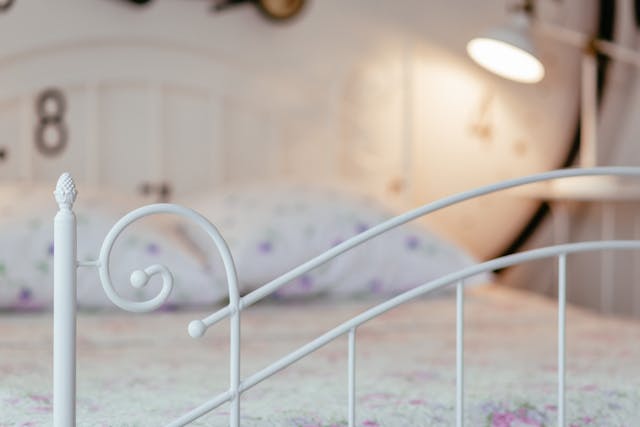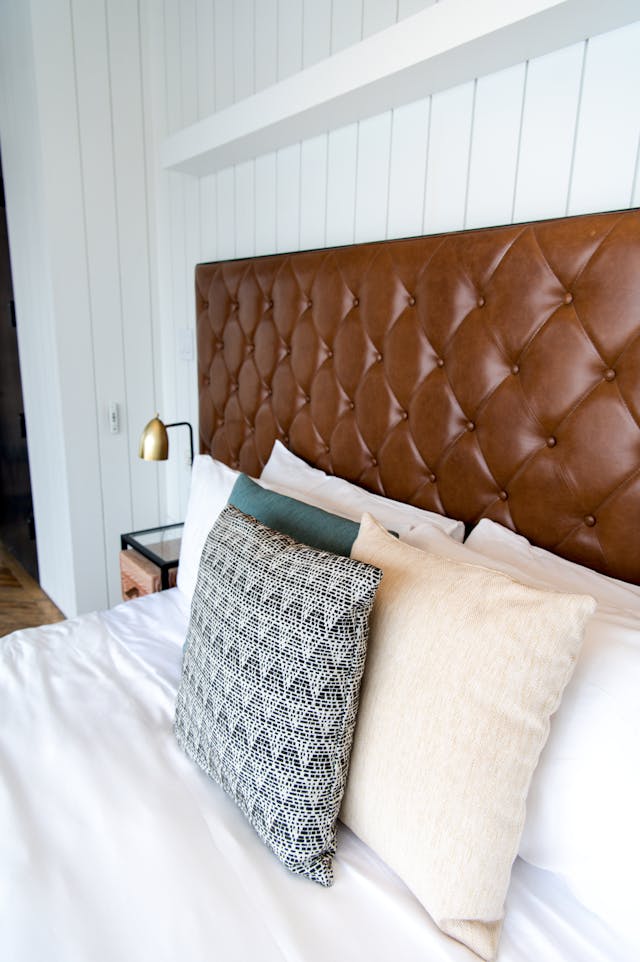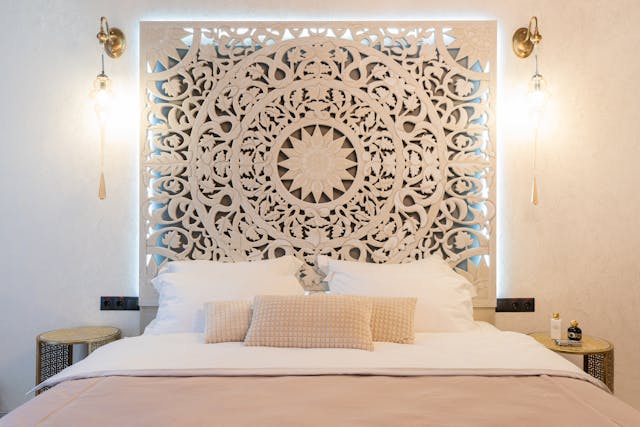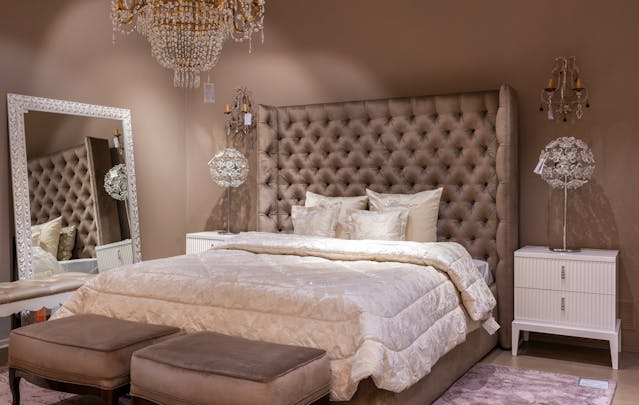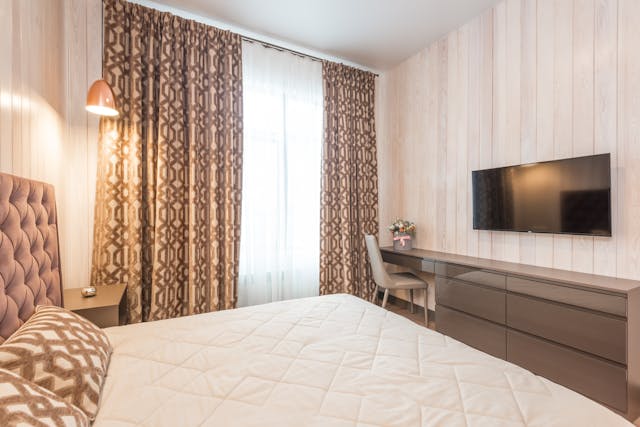Headboards extend beyond their functional purpose of providing support and comfort to those lounging in bed. They play a crucial role in defining the aesthetic of a bedroom. Deciding on the suitable headboard material and style can set the tone for the room’s entire design scheme. Material choices range from traditional woods, which offer a timeless and elegant look, to metals that bring a contemporary edge. Upholstered headboards introduce a plush texture, adding a layer of comfort and luxury, while natural fibers can create an eco-friendly, rustic vibe.
The array of styles is just as varied as the materials available. Sleek, minimalist headboards can complement a modern bedroom, whereas intricately carved wooden headboards exude a classic, opulent feel. Bookcase headboards combine style with utility, offering storage options for avid readers. Floating headboards give the illusion of space and can make a bedroom appear larger, while Slat and Panel designs offer a traditional look that highlights craftsmanship. For a personalized touch, one can opt for a headboard that incorporates elements such as mirrors, fabric tufting, or even unique live edge designs that celebrate the raw beauty of wood.
In deciding on a headboard, it’s essential to consider both comfort and overall bedroom ambiance. The right headboard not only supports restful sleep but also serves as a statement piece that reflects personal style and completes the bedroom’s aesthetic. Whether upgrading a current bed frame or selecting an entirely new setup, the choice of headboard material and style can transform the bedroom into a sanctuary of rest and relaxation.
Types of Headboards by Material
When selecting a headboard, the material is a critical factor that affects both style and durability. Each material possesses its own aesthetic appeal and functional benefits, catering to different preferences and bedroom decors.
Wood Headboards
Wood headboards are synonymous with versatility and timelessness, appreciated for their natural beauty and durability. They range from classic designs crafted from hardwoods such as oak and birch to eco-friendly options made from reclaimed wood. Consumers favor wood for its robustness and the warm, inviting atmosphere it imparts on a bedroom. Different wood finishes can complement various decorative themes, from rustic to contemporary.
Metal Headboards
Metal headboards offer a sleek and often modern appeal, with materials ranging from iron to stainless steel. They can feature intricate designs or simple, clean lines, showing great flexibility in both traditional and contemporary settings. Metal is known for its strength and longevity, requiring minimal maintenance while retaining structural integrity over time.
Fabric Headboards
Fabric headboards introduce a plush, soft aspect to the bedroom, often associated with comfort. Commonly used fabrics include cotton, linen, and velvet, providing a versatile palette of textures and colors. These headboards can be detailed with accents like tufting, adding to their luxurious feel. Fabric headboards are sought after for their ability to add a cozy, layered look to bedroom décor.
Leather Headboards
Leather headboards bring a sense of opulence and refined taste to a space. Genuine leather and faux leather options exist, catering to different price points and ethical considerations. Leather headboards are easy to clean and age well, often developing a rich patina over time. They pair well with both modern and traditional bedroom furniture, offering a sophisticated focal point.
Headboard Styles and Designs
Headboards can define the overall aesthetic and feel of a bedroom. They range from the ornately traditional to sleek modern designs, each catering to diverse preferences and bedroom themes.
Traditional
Traditional headboards are often characterized by rich materials like hardwood and feature ornate carvings or tufting. They invoke a sense of timelessness and luxury, commonly found in materials like oak, cherry, or mahogany. Styles can include arches or intricate designs that reflect historical periods, such as Victorian or French Provincial.
Modern
Modern headboards lean towards minimalist and clean lines, often incorporating materials like metal or upholstered panels. They offer a sleek look that complements a contemporary space. Colors are typically monochromatic or in neutral tones, incorporating elements of the minimalist aesthetic.
Contemporary
Contemporary headboards blend a variety of materials and designs, often reflecting current trends. This style is marked by its versatility and can include both plush upholstered fabrics and smooth, geometric wood patterns. They may also feature unique shapes or a mix of different textures.
Rustic
Rustic headboards bring the warmth and charm of country living into the bedroom. They are often made from reclaimed wood or feature a distressed finish, emphasizing natural beauty and simplicity. Popular in farmhouse-style homes, rustic designs focus on comfort and a homemade feel.
Industrial
Industrial headboards typically showcase raw materials like metal, wood, and exposed hardware. The style is reminiscent of an urban loft or warehouse, characterized by its utilitarian functionality and rugged aesthetic. These headboards often incorporate elements like steel piping or brushed metal for a distinct, edgy look.
Choosing the Right Size and Shape
Selecting the appropriate size and shape for a headboard is crucial as it should match the dimensions of your bed and complement the overall aesthetic of your bedroom.
King and Queen
King-size headboards typically measure 76 inches in width, while queen-size headboards often span 60 inches. Both should aim for a height that balances proportion and function, and can go up to 80 inches tall, depending on the room’s ceiling height. Queen headboards may feature arched or square designs, offering a focal point that enhances the room’s decor.
- King-size dimensions: 76″ W x 80″ H (approx.)
- Queen-size dimensions: 60″ W x 80″ H (approx.)
Full and Twin
Headboards designed for full-size beds, also known as double beds, have a standard width of 60 inches. Twin, or single beds, have headboards usually 38 inches wide. For smaller rooms, the headboard’s height should be kept in check to avoid overcrowding the space visually. Twin headboards can incorporate playful shapes such as diamond tufting for a stylish touch.
- Full-size dimensions: 60″ W x 80″ H (approx.)
- Twin-size dimensions: 38″ W x 75″ H (approx.)
Custom Sizes
For those requiring a headboard outside standard measurements, custom sizes are available to accommodate unique bed frames or specific design needs. It’s possible to request tall headboards for added drama or arched ones to echo architectural elements in the space. They can be tailored to fit the exact width and height necessary for your bespoke sleeping area. Customized headboards allow greater flexibility in shape, from arched profiles to unique geometric configurations.
- Custom-size dimensions: Variable (as requested)
Functional Headboards
Functional headboards combine form with utility. They often feature built-in storage space, helping to organize and declutter the bedroom.
Storage Features
Functional headboards with storage features are designed to maximize space in the bedroom. They may include shelves or compartments for storing items that traditionally clutter bedside tables. Wall-mounted headboards can also incorporate storage, offering a fixed and stable option for those who prefer not to have freestanding furniture.
Bookcase Headboards
Bookcase headboards are a specific type of storage headboard tailored for book lovers and those in need of space for small items. They not only provide a place to store books but may also have space for reading glasses, and nighttime essentials. The shelves and detailing of these headboards can be designed to align with the overall aesthetic of the bedroom while remaining highly functional.
Upholstery and Padding Techniques
A headboard’s aesthetic and comfort are greatly influenced by its upholstery and padding. These elements add both style and function, with various materials like velvet, linen, and cotton enhancing the tactile experience.
Tufted
Tufting involves creating a patterned surface where buttons or stitches are anchored through the upholstery and padding. This technique not only creates a visually appealing texture but also secures the padding in place, ensuring longevity. Materials like velvet are commonly used for tufting due to their plush feel and elegant appearance.
- Select a thick, durable upholstery fabric such as velvet for a luxurious look.
- Evenly distribute padding, like foam or cotton, before tufting to ensure consistent comfort.
Padded
Padding is crucial for comfort and forms the plush layer between the frame and the upholstery fabric. The materials used for padding, such as foam or batting, affect the headboard’s firmness and shape. Here are key steps:
- Apply a layer of foam on the headboard frame; secure it with adhesive.
- Wrap excess batting around to the back and staple in place for a snug fit.
Upholstered Headboards
An upholstered headboard provides both comfort and style. Fabrics range from linen for a breathable, lightweight feel to cotton for a soft and versatile option. When upholstering:
- Place the fabric face down, add a cotton layer for padding, then the headboard frame on top.
- Staple the fabric to the frame, making sure to pull it taut to avoid wrinkles.
Color, Pattern, and Texture Choices
In the realm of headboards, the right choice of color, pattern, and texture can define the style and ambience of a bedroom. These elements work in conjunction to create a cohesive aesthetic experience, contributing significantly to a room’s decor.
Solid Color
When selecting a solid color headboard, it is essential to consider the room’s overall color scheme. Solid colors offer a chance to introduce a bold statement or to create a serene and uniform appearance. Opting for neutral tones can provide versatility, while selecting a bold hue can become a focal point within the room. It’s a careful balance, where a headboard in a single color should complement existing decor without overwhelming it.
- Neutral Tones: Beige, gray, white
- Bold Colors: Navy blue, rich burgundy, emerald green
Patterns
The introduction of patterns can inject personality and visual interest into a bedroom. Whether one seeks a subtle, geometric design or an intricate, floral pattern, this choice can significantly affect the room’s style narrative. Patterns range from classic stripes to more complex motifs that can become the center of interest in minimalistic or monochromatic rooms.
- Subtle Patterns: Stripes, chevrons, polka dots
- Complex Motifs: Floral, paisley, abstract prints
Textured Materials
Textured materials can add depth and dimension to the room’s aesthetic, inviting a tactile experience. From the sleek and cool touch of leather to the cozy warmth of upholstered fabrics like tweed or suede, textures influence not only the look of the headboard but also its feel. Textures can range from smooth and refined to rough and rustic, catering to a diversity of style preferences.
- Smooth Textures: Faux leather, satin
- Soft Textures: Velvet, linen
- Rough Textures: Reclaimed wood, rattan
By considering these characteristics, one can curate a headboard that serves as much more than a mere functional accessory; it becomes a pivotal design element that can elevate a bedroom to the next level.
Accessorizing and Detailing
Accessorizing and detailing a headboard can significantly elevate the aesthetic appeal of a bedroom. Key details such as nailhead trim, carvings, and the addition of mirrors or signs introduce elements of glamour and sophistication.
Nailhead Trim
Nailhead trim adds a distinctive edge to upholstered headboards, creating clean, geometric lines that frame the piece. It’s an excellent way to introduce decor elements that exude a classic sense of style.
- Traditional: Straight lines for a clean, timeless look.
- Contemporary: Patterns or waves for a modern touch.
Carved Details
Carved headboards showcase the intricate craftsmanship and detail-oriented work that goes into creating a statement piece. Carved detailing can range from subtle floral motifs to bold geometric patterns, suiting various aesthetics from rustic to glam.
- Materials: Commonly found in wood or metal headboards.
- Style: Ranges from Baroque-inspired swirls to minimalist lines.
Mirrors and Signs
Incorporating mirrors and signs can reflect personal style and add a functional element to the headboard. Mirrors expand the sense of space, while signs can add a personal touch or witty element to the bedroom’s decor.
- Mirrors: Large, framed pieces to small, decorative accents.
- Signs: Custom or vintage finds that resonate with the owner’s taste.
Headboard Installation and Care
Installing a headboard can significantly enhance the comfort and style of a bedroom. Proper care ensures its longevity and aesthetic appeal. Below are straightforward guidelines for securely mounting a headboard, as well as effective maintenance tips.
Mounting and Assembly
When attaching a headboard to a bed frame, it’s imperative to ensure that the width and mounting holes of the headboard align with those of the frame. Assembly typically involves the following steps:
- Position the headboard at the head of the bed.
- Align the holes on the headboard with the corresponding holes on the bed frame.
- Secure the headboard using bolts and nuts, tightening them with appropriate tools.
Some headboards are wall-mounted, which involves:
- Measuring and marking the wall for precise placement.
- Installing mounting brackets on the wall.
- Attaching the headboard to these brackets.
Maintenance Tips
Maintaining a headboard depends largely on its material. Here are some material-specific maintenance tips:
- For painted headboards:
- Utilize a damp cloth to clean.
- Address scratches with touch-up paint that matches the original finish.
- For fabric headboards:
- Vacuum regularly to remove dust and prevent allergens.
- Spot-clean stains promptly using a recommended fabric cleaner.
It’s crucial to follow the manufacturer’s maintenance guide to avoid damage. Regular inspections can identify issues early, ensuring the headboard remains a pristine part of your bedroom for years to come.

